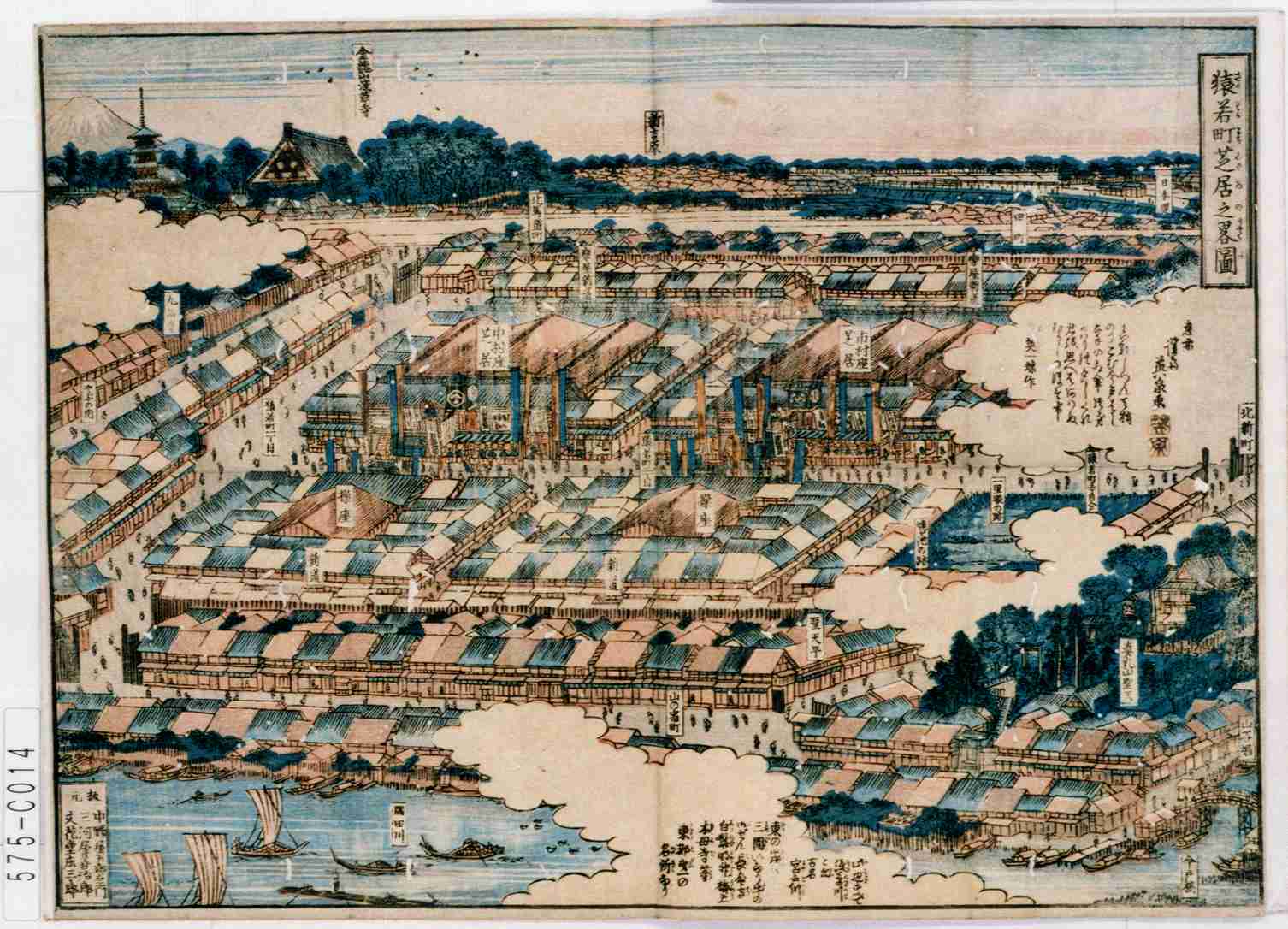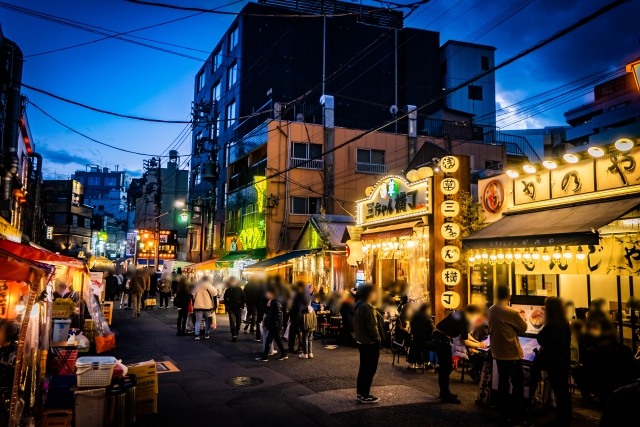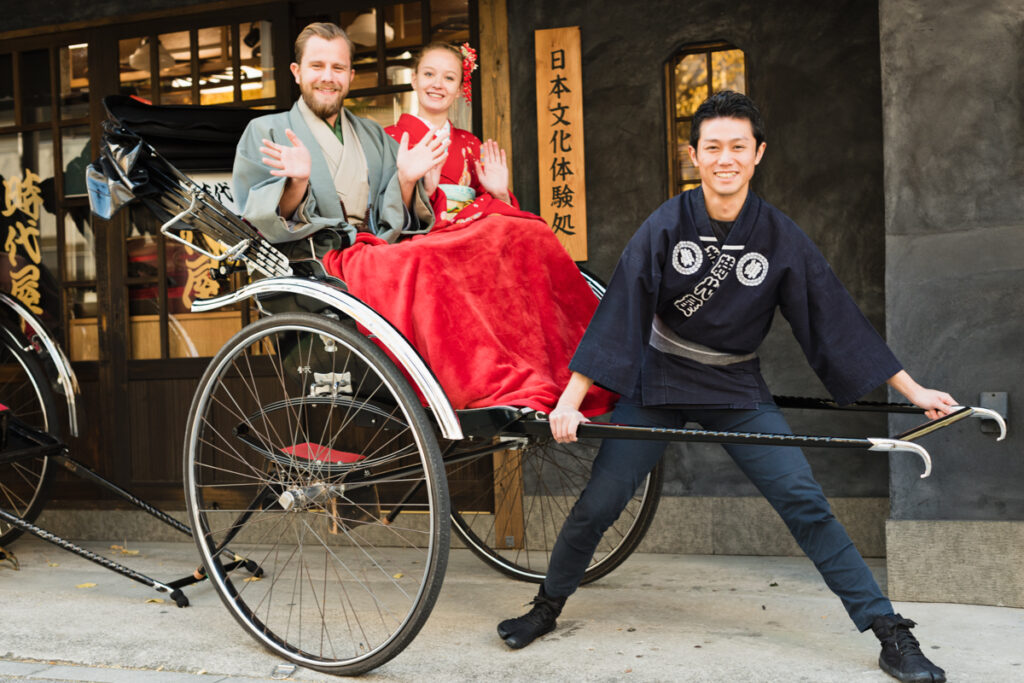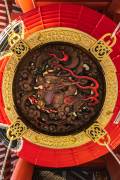


Asakusa’s Secrets Revealed
Hidden Asakusa, where the Traditional Performing Arts of Kabuki and Geisha Flourished
(c)Tokyo Metropolitan Library
The Glorious Years of Kabuki and Geisha in the Entertainment District of Asakusa
Today Asakusa is a popular tourist destination, attracting visitors with the magnificent Sensoji, Tokyo’s oldest temple, and th e su rrounding maze of small merch ant streets exuding Edo er a char m (1603-1868). While Asakusa developed as a temple town in its early days, and later as a trade center for a diverse group of artisans and merchants, the district’s true heyday occurred during the Edo period. This was mainly due to the large concentration of venues devoted to the performing arts and resident artists. In the mid-19th century, many teahouses and actors’ residences along with three of the most prominent kabuki theatres and two puppet theatres, were relocated to Asakusa, forming Saruwakacho, the largest performing arts district in Edo. Behind these relocation measures was the shogunate’s desire to sequester the pleasure districts of the urban class from the central parts of the city, Asakusa being an outlying suburb of Edo. But the effect was precisely the opposite: this led to the birth of a new type of geisha entertainer originating from these theatrical teahouses who, together with geisha from the two other locations in the area, greatly boosted Asakusa’s popularity, enhancing its reputation as a bustling center of urban culture . Today the theaters in the Saruwakacho quar ters no longer exist, yet the remaining Asakusa Kagai geisha district, annual New Year kabuki performances, and numerous artisan workshops still serve to remind us of Asakusa’s enduring greatness as Tokyo’s most significant performing arts district.
Premium Kabuki and Geisha Experiences to Discover the Renowned Legacy of Asakusa’s Performing Arts
In the Footsteps of Asakusa’s Vibrant Kabuki Heritage
Although the former Saruwakacho kabuki district no longer exists, there are many vestiges of the glorious kabuki years to be found throughout Asakusa. Many are hidden around the corners of small back alleys, within shrine grounds and even behind Sensoji Temple itself. The best way to uncover the secrets of Asakusa’s kabuki heritage is to follow a kabuki professional (either a current actor or a stagehand), who will guide visitors around the neighborhood’s historical spots and introduce artisans who have a deep connection to the performing art. The highlight of this expedition is an introduction to the mysteries of kabuki stage makeup and basic performance styles. Visitors will even have the opportunity to apply the makeup and try their hand at performing themselves.
Exploring the Enchanting World of Asakusa Kagai’s Geisha
Asakusa is currently one of the six remaining Kagai districts (geisha districts) in Tokyo. The art of entertaining guests through traditional Japanese dances and musical performances originated in pleasure districts such as Yoshiwara, but from as early as the 17th century a clear distinction was made between pleasure girls and sophisticated geisha entertainers. Today Asakusa Kagai is the only place in Japan to include not only female geisha, but also 6 hokan (male entertainers). There are several traditional teahouses and restaurants where visitors can enjoy the perfection of the geisha’s skills. The so-called “ozashiki” experience is a unique opportunity to admire the performances of Asakusa’s geisha up close during a traditional dinner in a refined Japanese restaurant. For foreign visitors, private guidance is provided in order to facilitate communication with the geisha and navigate the etiquette of the Kagai district. To fully experience the art of geisha, it is highly recommended to interact and engage with them. Their mastery of the craft includes offering unparalleled hospitality through anticipating the guest’s mood and preferences while performing traditional dances, playing musical instruments, serving drinks, and having engaging conversations, all within the intimate setting of a tatami room.
Geisha and Tea Ceremony! Experience traditional Japanese Culture in Asakusa
A special experience plan where you can learn about authentic tea ceremony and interact with Asakusa geisha. In the first half of the tour, you will have tea made by geisha. In the second half, with a guidance by a tea ceremony teacher, you will drink the tea made by yourself. A professional teacher will teach you carefully in a small group, and you can also take pictures with the geisha.
Asakusa Geisha
Entertaining Guests with their Artistic Performance and Passing Down the Treasured Geisha Culture to Future Generations
Asakusa Map
Asakusa’s Must Visit Places Related to Kabuki and Geisha
Meet who you intended to.
Unlock stories you longed to know.
A premium stay in Asakusa.
Asakusa has prospered for over 400 years as the cultural center of the city, when Tokyo was still called Edo. Each person and every shop has a vibrant history, awaiting for you to discover.
Japanese Culture
Profound cultural experiences for you to dive deeper in the heart of Japan.

Local Gourmet
Asakusa is full of gourmet gems. Make traditional Asakusa signature sweets or mingle with the locals while drinking along Hoppy Street at night.

Responsible Tourism
The traditional Japanese lifestyle that is becoming popular again, was already very sustainable. From the kimono, symbol longevity and generational re-use, to the ultimate eco-friendly vehicle: the rickshaw.

Regional Branding Institute Co.,Ltd.
Aquatellus UⅡ 8F, 2-20-3 Kaminarimon, Taito-ku, Tokyo 111-0034
attractive.japan@chibra.co.jp
Tel.+81 03-5246-4248
Fax.+81 03-6732-3140
© Regional Branding Institute Co.,Ltd. All rights reserved.













































